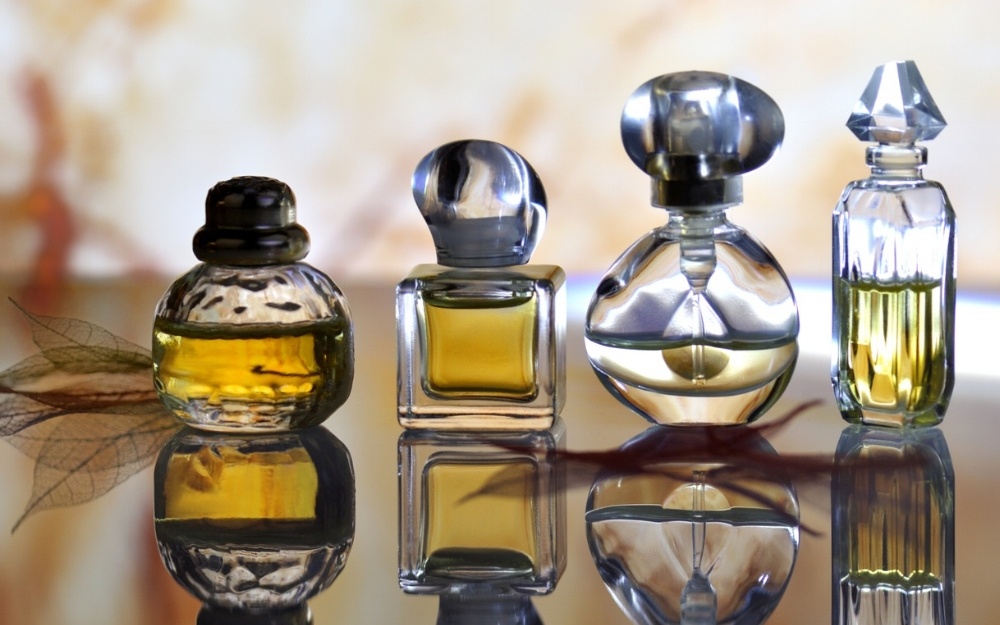Transporting dangerous goods: the right packaging and labeling for perfumery products

Did you know that hazardous goods are quite frequently hidden in consumer commodities? Let’s take for example deodorants, nail polish, nail polish remover, hairspray or parfums… all those products are highly flammable! For this reason, it is obligatory for the sender to follow norms and regulations put in place to administer the transport of dangerous goods: ADR, RID, ADN, IMDG and ICAO/IATA.
Let’s have a look at the particular case of perfumes: what are the risks that can occur during their transport? First of all the fragility of the packaging. Often, perfumes are filled in glass bottles and hence subject to breakage.
When a packaging gets broken, it is at risk to spill its content and hence to compromise also other packages inside the same box. The risk can be greater for the operator that has to move the goods as well as for the driver and the transport itself. The negative outcome is the loss of the product, but more so the discomfort of the client that does not get his goods delivered. That’s why it is so important to pay close attention to a secure transport of perfumery products!
Perfumery products … PG II or PG III?
The first step to a secure transport is the choice of packaging: what is the right kind of packaging for my dangerous goods? If this subject is new to you, it’s always good to turn to expert advice for the proper packaging solutions.
Before taking a permanent decision, it is a must to have a look at the product specifications and the danger level – also called packing group (PG). Given that perfumes are liquid, hence classified as class 3, the corresponding UN number to the product is UN1266 (perfumery products).
When looking at the danger level of perfumes, there are two packing groups that it can relate to: PG II and PG III. The PG II contains all average dangerous products, whereas the PG III corresponds to low-rated dangerous products. Each packing group refers to a certain type of packaging.
Packaging and labeling for perfumes:
Transporting perfumes is quite complex and there are more parts to it that go beyond the packing group. One part is the mode of transport, another one the quantity of the substance contained inside the inner packaging; all these elements are influencing the choice of the packaging and the labeling. As there are a few transport modalities to choose from, we are looking closer into the shipment of perfumery products with a combination packaging by road ADR, rail RID, inland waterways ADN and sea IMDG.
1. PG II fully regulated
If the packaging containing the perfume is made of glass it has a permitted capacity of 10 L, 40 L if made of metal and 30 L if made of plastic. The outer packaging must, in case of a cardboard box, be certified as 4G or 4GV. The maximum gross weight of one single package must not exceed 400 kg, while the transport unit does not have any limit to its capacity.
Regarding labeling and marking of PG II perfume packages, they must show the hazard class 3 label (red with a fire symbol), the package orientation (this way up) on the two opposite sides of the package, the UN number UN1266 and the UN mark. These prerequisites are valid for regulations currently in place. When looking at transports by sea (and also air), it is necessary to apply onto the package the proper shipping name (PSN) and the UN Number, in our case UN1266 “PERFUMERY PRODUCTS”.
2. PG III fully regulated
The choice of packaging for PG III is the same one as in PG II. The biggest difference lies in the capacity limit of the transport unit, which is 1000 L.
3. PG II and III in limited quantity
In the case of a limited quantity shipment, the difference between PG II and PG III does not exist, but there is a difference in the prerequisites of the packaging.
The inner packaging must not accede a maximum of 5 L per package, while the total gross weight of the whole package must not exceed 30 kg. There is also a change to marking and labeling. The hazard class labels are not applicable in this case, as the Limited Quantity has its own marking (diamond-shaped black and white). The package itself does not have to be UN certified, but must comply with some norms stated in chapter 6.1.4, which are very similar to the prerequisites of homologated packaging, but without the UN mark on it. It can be noted that nearly every UN certified packaging can be used for shipment in limited quantity.
